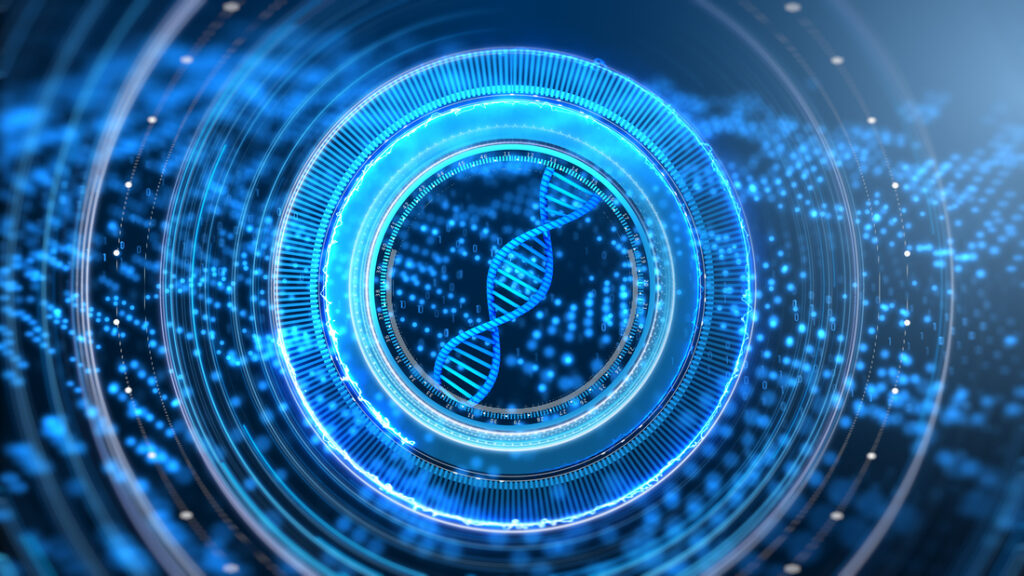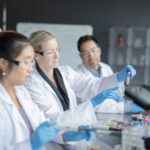Artificial intelligence (AI) is changing biotechnology from agriculture to bioprocessing and much more. Still, it’s a little hard to put a number on AI’s penetration in these fields. Part of the challenge arises from the many flavors of AI, which include deep learning, machine learning, and natural language processing. So, Niketan Deshmukh, PhD, director of the LJ School of Applied Sciences in Ahmedabad, India, and Reshma Talkal, PhD, deputy manager at Sundyota Numandis, a biopharmaceutical company in Ahmedabad, completed a bibliometric study to analyze publication trends around the world from 2000 to 2o25.
To perform this analysis, Deshmukh and Talkal used AI. For one thing, they collected information through the Dimensions.ai database, which uses AI to improve natural-language searches and to create summaries of articles. To reveal any trends in the data, Deshmukh and Talkal used R programming and the VOSviewer to visualize the results.
They found 5,422 AI-related articles in biotechnology. For 2000 through 2015, the data digging produced fewer than 50 articles per year, but that started to change about a decade ago. The 230 publications in 2018 turned into 622 in 2021 and 1,163 in 2024.
“The bibliometric analysis of AI applications in biotechnology highlights a remarkable growth in research activity over the past two decades, particularly after 2015,” Deshmukh and Talkal note. “While the early years (2000–2015) saw a steady but moderate research output, the field experienced exponential growth from 2016 onward.” Among several emerging trends for the use of AI in biotechnology, these researchers point out sustainable bioprocessing. In addition, they found that AI is being integrated into bioprocess automation.
Collaborations are key
According to Deshmukh and Talkal, AI applications in biotechnology ramped up because of “advancements in computational power, machine learning algorithms, and increased interdisciplinary collaboration.”
Although many people think of AI emerging from high-performance computing (HPC) and algorithms, collaboration is crucial, and that takes people. As Mike Bernhardt, a strategy expert with decades of experience in the HPC ecosystem, recently wrote: “At the core of a thriving scientific software ecosystem are the cross-disciplinary professionals who develop, maintain, and scale a growing suite of tools and applications—research software engineers, domain scientists, data curators, user interface specialists, and infrastructure architects.”
Although Deshmukh and Talkal’s work found that the United States dominated publications that applied AI to biotechnology—accounting for 30% of the journal articles—that is not guaranteed to continue. Staying ahead in the use of AI in biotechnology, though, should be a national imperative.
“Scientific software is far more than an academic concern—it’s a foundational driver of national competitiveness,” Bernhardt emphasizes. “From accelerating AI-driven breakthroughs in clean energy and materials science to strengthening our agricultural systems and national security, its impact reaches across critical sectors of society.”
For now, AI faces obstacles to reaching its full potential in biotechnology. “AI, for the foreseeable future, is not self-evolving in any form that will benefit biotechnology without proper guidance,” says Bernhardt in a follow-up interview. “The contribution of the human workforce, trained and skilled in the application of AI, specifically in this critically important field of research, is more important than ever.”
A VC’s point of view
In many cases, the significance—or perhaps promise—of a technology can be gauged from the perspective of venture capitalists. To get such a point of view about AI’s impact on biotechnology, I reached out to Thomas Thurston, chief technologist at Ducera Growth Ventures in Auckland, New Zealand.
“Through our work supporting agricultural innovation ecosystems, we witness firsthand how AI transforms biotechnology when properly integrated with human expertise,” Thurston says. “The bibliometric trends Deshmukh and Talkal identify mirror the investment patterns we track.” As Thurston points out: “Successful agricultural AI ventures build bridges between traditionally separate disciplines.” For example, Ducera Growth Ventures’ portfolio, he says, “includes companies where computational biologists partner with entomologists to develop peptide-based bioinsecticides, using machine learning to identify and optimize naturally occurring molecules that target specific pests while preserving beneficial insects.”
In addition, Thurston mentions another portfolio company that “combines microbiome scientists with data engineers to decode soil microbial communities, applying AI to understand complex interactions between billions of microorganisms and develop targeted biological solutions that enhance crop resilience and nutrient availability.” According to Thurston, “This interdisciplinary approach explains why AI adoption accelerated after 2015[, because] the technology matured enough to be accessible to domain experts, while agricultural scientists recognized AI’s potential to address previously intractable problems.”
From agriculture to healthcare, collaborations will underlie the success of AI-based applications. “Supporting these collaborative teams through targeted investment and mentorship creates the conditions for breakthrough innovations in sustainable agriculture,” Thurston notes. Similar collaborations and investments are likely to enhance the benefits of applying AI to sustainable bioprocessing, as well.



